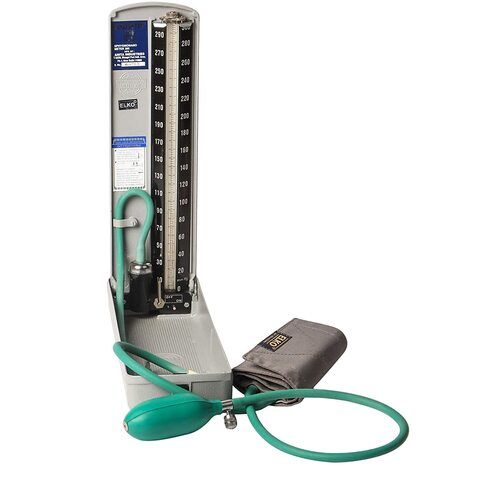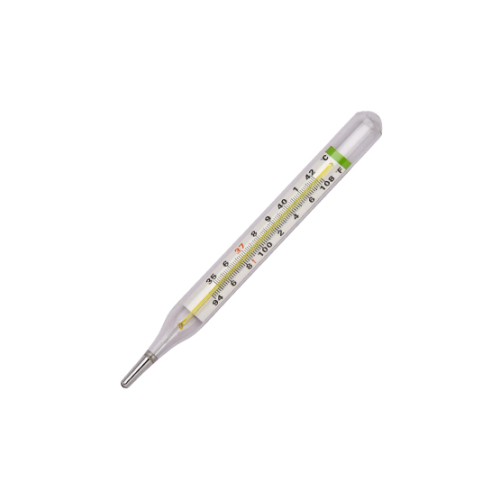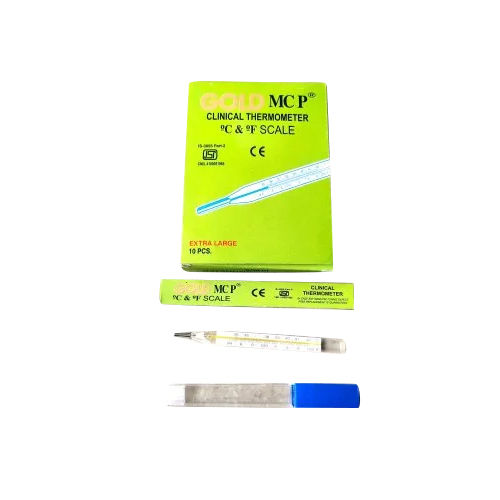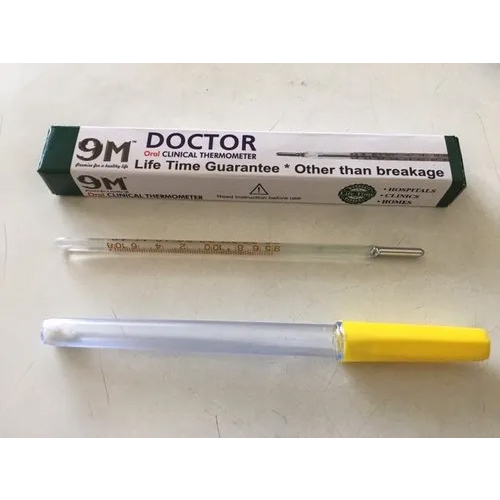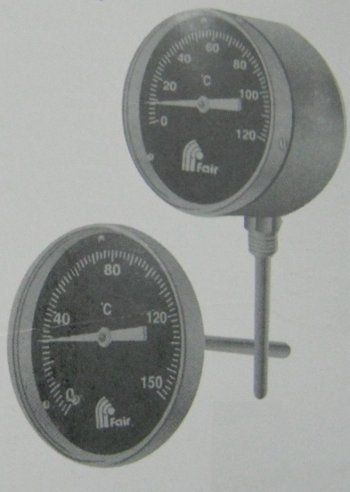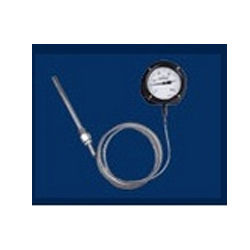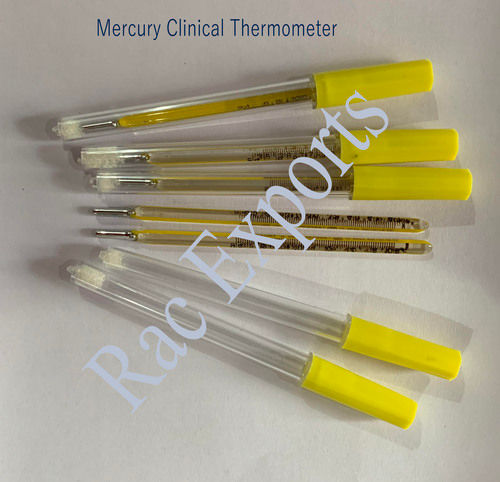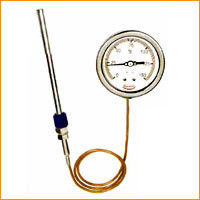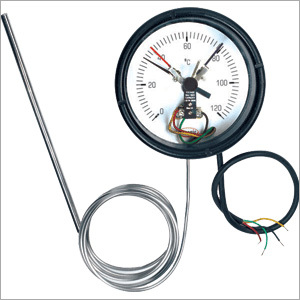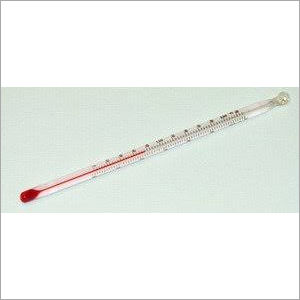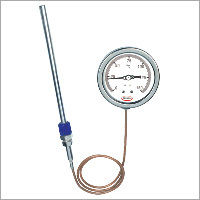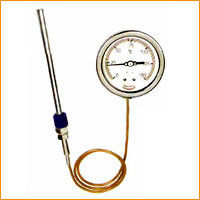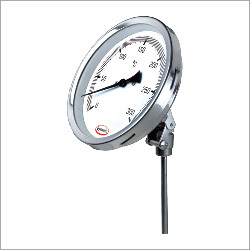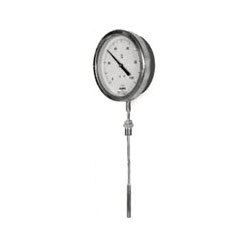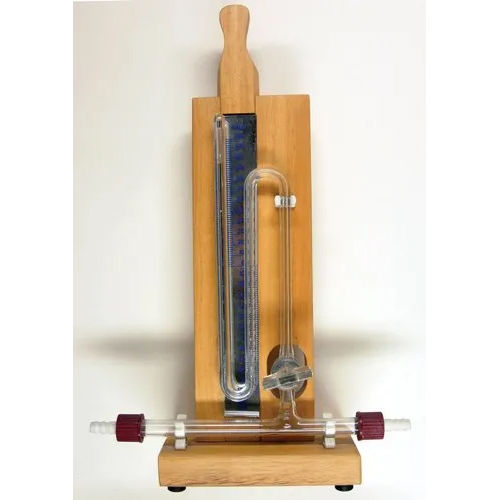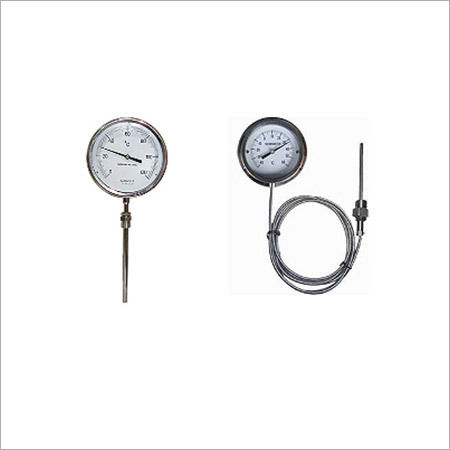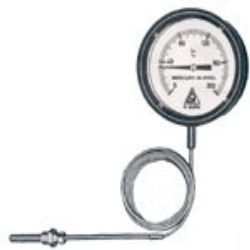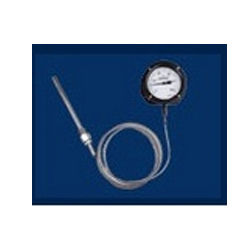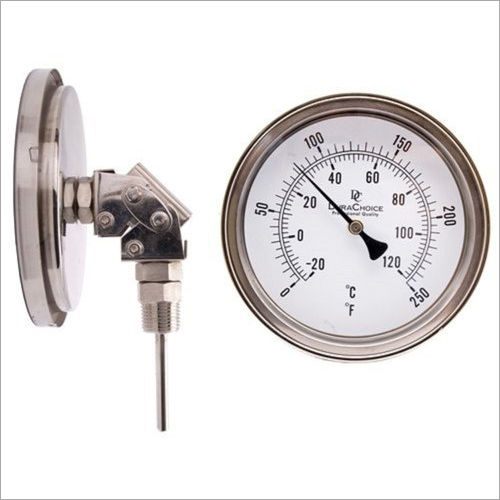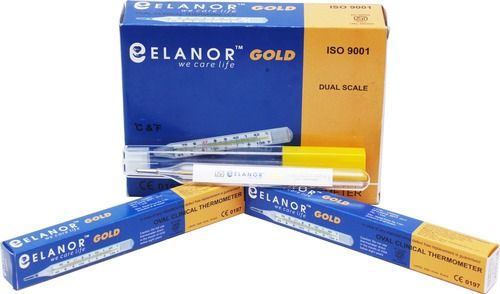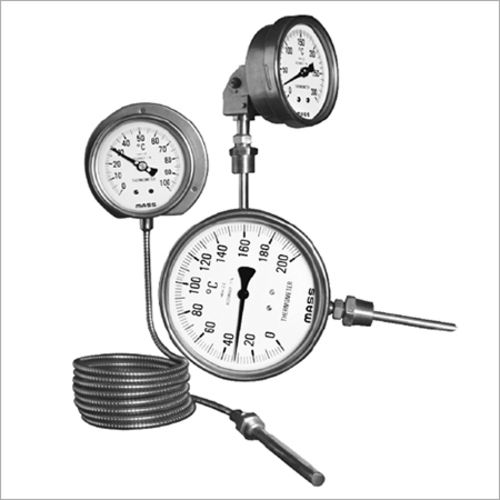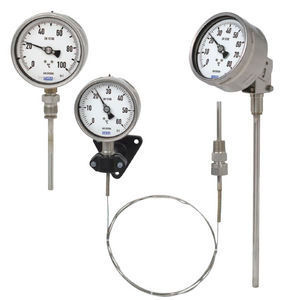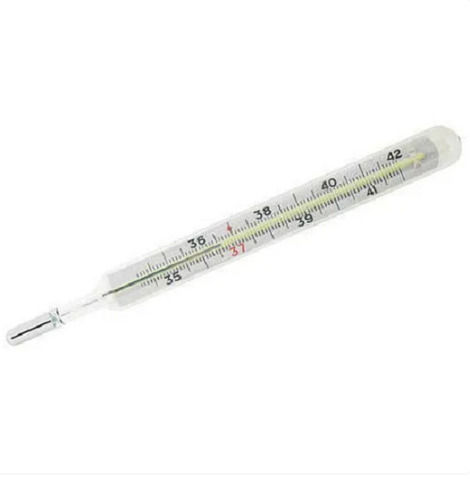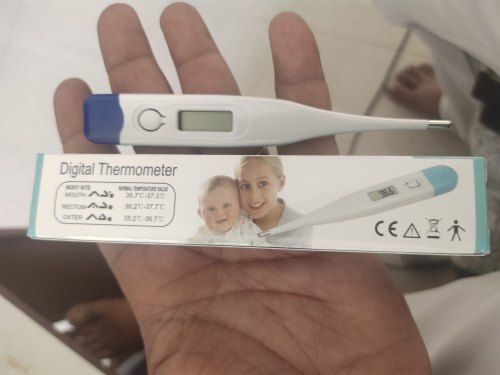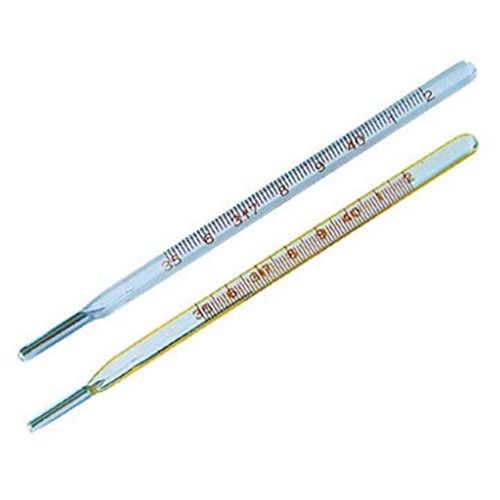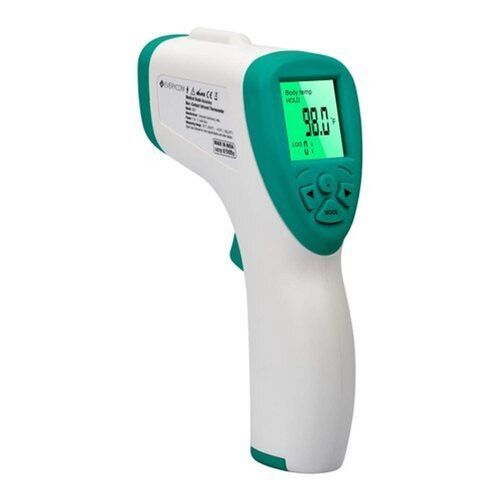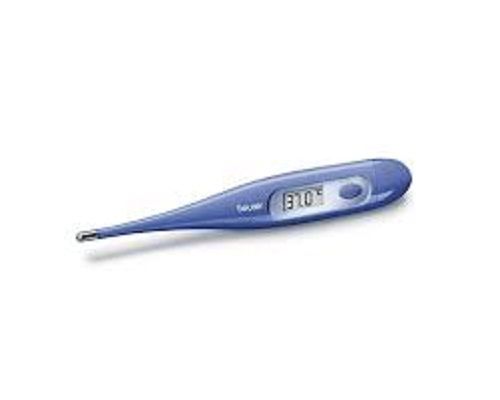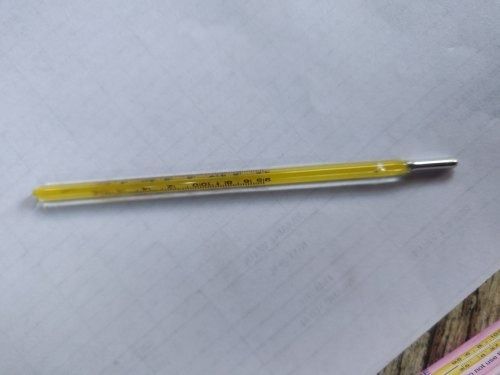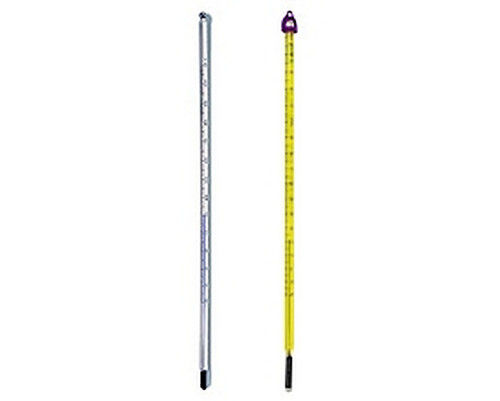- Tradeindia
- Temperature Instruments
- Mercury Thermometers
Mercury Thermometers
(107 products)Mercury sphygmomanometer
Price: 3200 INR/Foot
MOQ1 Foot/Feet
Main Export Market(s)Asia
Main Domestic MarketAll India
Mercury Thermometer Application: Medical Industries
MOQ50 Unit/Units
UseHospital
MaterialPlastic, Glass
ApplicationMedical Industries
Unisurge Enterprises Private Limited
Ahmedabad
 Trusted Seller
Trusted Seller2 Years
 Super Seller
Super SellerMercury Thermometer Application: Industrial
Price: 69 INR/Piece
MOQ100 Piece/Pieces
MaterialGlass
ColorTransparent
Operate MethodSemi - Automatic
Safe & Fresh Products Private Limited
Delhi
 Trusted Seller
Trusted Seller2 Years
 Super Seller
Super SellerLiquid mercury 99.999%
Price: 120 USD ($)/Kilograms
MOQ100 Kilograms/Kilograms
Payment TermsPaypal, Telegraphic Transfer (T/T), Western Union
Supply Ability100000 Per Month
Delivery Time5 Days
Sa Globalz Merchandise Import And Export
Johannesburg
 Trusted Seller
Trusted Seller4 Years
 Super Seller
Super SellerPatient Examine Products Mercury Thermometer
Price: 90 INR/Piece
MOQ50 Piece/Pieces
Product TypePatient Examine Products
Conxport Thermometer Mercury Deluxe
FOB PortDelhi
Payment TermsLetter of Credit (L/C), Telegraphic Transfer (T/T), Paypal, Others
Supply Ability15 Per Week
Contemporary Export Industry
Ambala Cantt
 Trusted Seller
Trusted Seller4 Years
 Premium Seller
Premium SellerMercury Thermometer Regular Recommended For: Hospital
Price: 125 USD ($)/Piece
MOQ10 Piece/Pieces
Drug TypeOther Types
Physical FormOther
FunctionOther
Clinical Mercury Thermometer Recommended For: Children
Price: 75 INR/Piece
MOQ500 Piece/Pieces
TypeOther, Mercury Thermometer
UsageOral
Recommended ForAll, Women, Men, Children
Oceanic Healthcare
Coimbatore
 Trusted Seller
Trusted Seller7 Years
 Premium Seller
Premium SellerMercury In Steel Thermometers
Product DescriptionA wide range of high quality Mercury In Steel Thermometers are being offered to all our clients. These are manufactured under highly strict measures in order to maintain its compliance with the well-defined quality standards. In addition to this, clients can obtain these Mercury In Steel Thermometer
Fairdeal Tubes Corporation
Mumbai
 Trusted Seller
Trusted Seller7 Years
 Premium Seller
Premium SellerStainless Steel Mercury Thermometer
Price: 1650 INR/Piece
MOQ10 Piece/Pieces
UsageIndustrial
MaterialStainless Steel
TypeOther, Mercury Thermometer
Transparent Mercury Thermometer
Price: 56 INR/Piece
MOQ1000 Piece/Pieces
Equipment TypeHOSPITAL use
MaterialOther
ConditionNew
Top Rated Products
FAQs Related to Mercury Thermometers
- Choose a mercury-free glass thermometer
- Pick between an oral or a rectal thermometer.
- Use soap and water to clean the thermometer.
Mercury Expansion Thermometers
MOQ25 Number
Supply Ability100 Per Week
Delivery Time10-15 Days
Main Domestic MarketAll India
Mercury Thermometer With Strong Magnetic Sensor Interior Material: Glass
ColorVarious colors are available
UsageLaboratory
MaterialAluminum & Glass
Clinical Thermometer for Measuring Body Temperature
Payment TermsCash Against Delivery (CAD), Cheque, Letter of Credit (L/C), Telegraphic Transfer (T/T), Western Union, Paypal, Cash in Advance (CID), Cash Advance (CA)
Supply Ability100000 Per Week
Main Export Market(s)Asia, Australia, North America, South America, Eastern Europe, Middle East, Central America, Western Europe, Africa
Mercury Manometer Application: In Chemical Processes .
MOQ5 Piece/Pieces
Usagelaboratory
Applicationin chemical processes .
MaterialSTAINLESS STEEL
Mercury-In-Steel Thermometer
Product DescriptionFollowing Specification of Mercury-In-Steel Thermometer :\015\012\015\012TYPES : Rigid Sten &b Distance (capillary).\015\012DIAL SIZE : 100, 150 & 250 mm.\015\012ACCURACY : + 1% of range span.\015\012AMBIENT COMPENSATION : With Bi-metal.\015\012BOURDON : \015\012MATERIALS : Alloy Steel or Stai
Mercury Thermometer Application: Chemical Laboratory
Price: 90 INR/Unit
MOQ100 Unit/Units
SizeDifferent Size
UsageIndustrial
ColorTransparent
Mercury In Steel Dial Thermometer
Product DescriptionWe are offering our customers an excellent quality range of Mercury In Steel Dial Thermometer. These are manufactured from qualitative range of raw materials, which is quality checked by our team of experienced professionals. We offer these Mercury In Steel Dial Thermometer at most competitive price
Clinical Mercury Thermometer with High Accuracy
Price: 22 INR/Piece
MOQ5000 Piece/Pieces
Payment TermsWestern Union, Cheque, Cash Advance (CA)
Supply Ability50000 Per Week
Delivery Time50000 Week
Oval Mercury Thermometer Application: For Hosptail
Price Trend: 45-50 INR/Piece
MOQ3000 Piece/Pieces
UsageFor Paitant
ApplicationFor Hosptail
Product TypeThermometer
Mercury Thermometer
Price: 99 INR/Piece
MOQ10 Piece/Pieces
Supply Ability500 Per Day
Delivery Time2 Days
Mercury Actuated Thermometer
Price: 1200 INR/Number
MOQ1 Number
Delivery Time2 Week
Packaging Detailscorrugated box
Main Domestic MarketMadhya Pradesh
Mercury In Steel Thermometer
Product DescriptionOur clients can avail from us a wide range of high quality Mercury in Steel Thermometer, which is aesthetically designed and precision-engineered keeping in view the various needs of the clients. These are highly demanded for their higher performance and durable work life. In addition to this, all t
Mercury Thermometer Dimension(L*W*H): 110+/-5 Millimeter (Mm)
Price Trend: 0.50 - 0.65 USD ($)/Piece
MOQ7200 Piece/Pieces
TypeOther
PropertiesOther
Usagehome using
Latest from Mercury Thermometers
Quick Measurement Underarm Temperature Highly Efficient Digital Clinical Thermometer
150 INR
By:
Pathology Center
Traditional Dual Scale Fever Mercury Free C&F 2p Classic Glass Thermometer Pack Of 2 Pack
70 INR
By:
Shubham Surgical
Manually Operated Digital Abs Forehead Temperature Gun Ir37 , 204 Grams
1799 INR
By:
Shri Sadhguru Life Care
Light Weight Easy Reading Colour Purple Body Temperature Thermometers
499 INR
By:
Dss Imagetech Private Limited
High Coefficient Of Expansion Pen Type Mercury Clinical Thermometer (Yellow)
100 INR
By:
Dheeraj Traders
Mercury Thermometer With Strong Magnetic Sensor
By:
Cee Pee Enterprises
Crack Resistance Mercury Thermometer
By:
Sainco Thermometer Industries
Precision Yellow Back Mercury Thermometer
By:
A. R. Instruments Co.
Explore More Cities

Explore in hindi
पारा थर्मामीटर
What is Mercury Thermometer?
Types of Mercury Thermometer
Mercury Thermometer Uses
Comparison Between Mercury & Digital Thermometer
- In either extreme heat or cold, a mercury thermometer will not crack.
- It has a high-temperature measuring capacity and is an excellent heat conductor
- Because mercury doesn't drip down the thermometer's glass, the readings are reliable.
- It's crucial equipment for every laboratory.
- Toxic mercury. Take caution when handling it.
- A mercury thermometer's glass construction makes it prone to shattering
- Mercury spreads quickly if it falls to the ground, making the area hazardous and difficult to clean up.
- The reading itself is a time-consuming process.
- A digital thermometer can be used quickly and easily.
- It provides readings much more quickly than a traditional mercury thermometer.
- Since it lacks potentially dangerous compounds, it is safer to use.
- As compared to a mercury thermometer, it provides more accurate readings.
- In case the batteries in your digital thermometer ever die, you should always have a backup set on hand
- The results may not be reliable if the batteries are nearly dead
- The battery's eventual depletion is notoriously hard to foresee.
- Getting a digital thermometer clean is tricky because water can cause mechanical havoc.
Mercury Thermometers Price List
This Data was Last Updated on 2024-12-12
Mercury Thermometers Manufacturers | Suppliers in India
Company Name | Member Since |
|---|---|
Physio Care Devices New Delhi, India | 13 Years |
Dynamic Gauges Pvt. Ltd. Vasai, India | 11 Years |
Western Surgical Rajkot, India | 9 Years |
Akshar Pharma Surat, India | 9 Years |
Instonnic Vadodara, India | 9 Years |
Oceanic Healthcare Coimbatore, India | 7 Years |
Fairdeal Tubes Corporation Mumbai, India | 7 Years |
Fairbizps Delhi, India | 7 Years |
Namco National Medicine Co Amritsar, India | 6 Years |
Medrays Healthcare Chalisgaon, India | 5 Years |
Upcoming Tradeshows
Gulfood 2025
Mon, 17 Feb, 2025 - Fri, 21 Feb, 2025
National Expo Raipur 2025
Sun, 19 Jan, 2025 - Wed, 22 Jan, 2025
International Crop Science Conference and Exhibition 2025
Tue, 21 Jan, 2025 - Wed, 22 Jan, 2025
LogiMAT India 2025
Thu, 13 Feb, 2025 - Sat, 15 Feb, 2025
WATER EXPO VIJAYAWADA 2025
Wed, 29 Jan, 2025 - Fri, 31 Jan, 2025
Printing South China 2025
Tue, 04 Mar, 2025 - Thu, 06 Mar, 2025
CHINA INTERNATIONAL FURNITURE FAIR 2025
Tue, 18 Mar, 2025 - Fri, 21 Mar, 2025
INDIA ART FESTIVAL 2024
Thu, 19 Dec, 2024 - Sun, 22 Dec, 2024
MachAuto 2025
Fri, 23 May, 2025 - Mon, 26 May, 2025
10th IMTOS-India Machine Tools Show 2025
Thu, 15 May, 2025 - Sun, 18 May, 2025
Popular Categories


